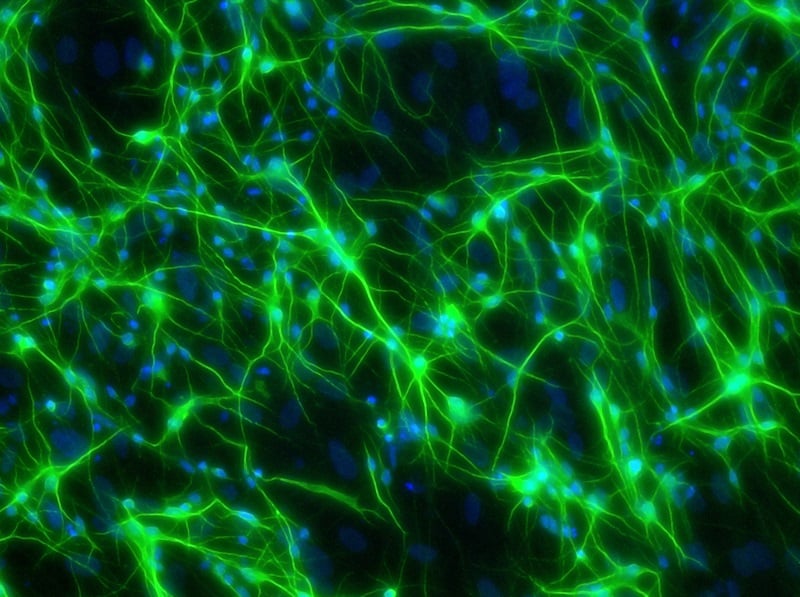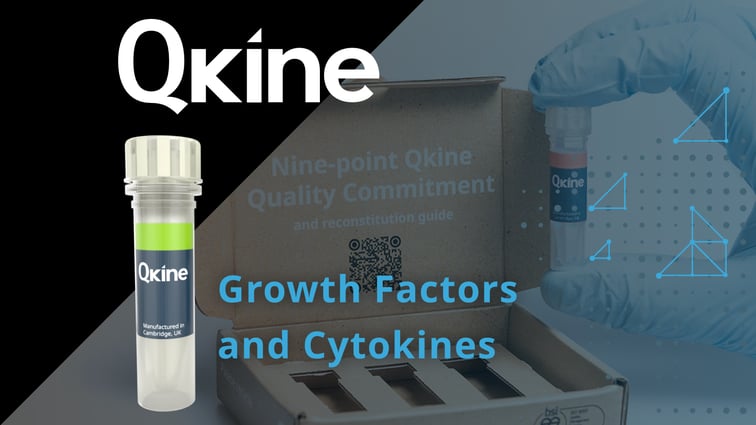In celebration of our distributorship with NeuCyte, REPROCELL catches up with the company's VP of Business Development, Dr Ji Wu, to discuss the benefits of SynFire technology. Read on to find out the science behind this technology, and how using human neural models can benefit your drug discovery and toxicology research.
What are SynFire cells?
NeuCyte’s SynFire cells are human induced pluripotent stem cell (iPSC)-derived neuronal cells from healthy donors. The cells are made through a proprietary technology which allows for the direct conversion of human iPSCs into specific neural subtypes. Using specific combinations of defined transcription factors, NeuCyte can directly reprogram iPSCs into pure populations of different induced neural (iN’s) cell types. These cells are then cryopreserved and banked for distribution. SynFire cells are combined with human astrocytes to yield a highly functional neural in vitro platform for a wide range of applications.
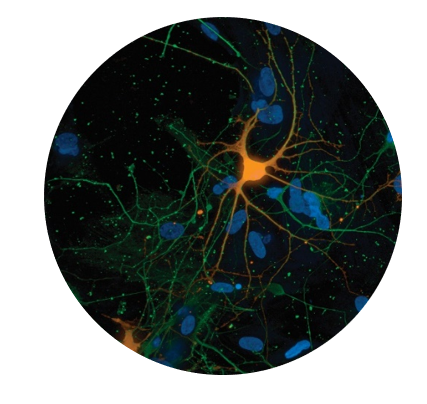
“SynFire neural cells mature very rapidly and achieve levels of maturation that are comparable to primary neural cultures”
There are more than one such system commercially available. What makes the SynFire system different?
Most cell providers take a conventional step-wise approach to guide neuronal differentiation. Such approaches employ extracellular signaling cues like patterning and growth factors to drive the differentiation of pluripotent stem cell cells to a particular neural cell population.
Unfortunately, this process tends to be slow and can potentially lead to varying degrees of heterogeneity in identity and maturation stage the target cell population, which can then lead to reduced robustness and reproducibility in assay applications.
NeuCyte takes a direct reprogramming approach for generating neural cells which brings many advantages:
- It allows for the generation of pure homogenous populations of specific neural subtypes. NeuCyte provides these different cell types in individual vials that can be mixed and matched depending on the experimental design of the end user. This enables a fully modular system which is defined in its cellular composition of the specific neuronal and glial cell types. The end users also has the flexibility to customize their cultures to contain pure or mixed neuronal subtypes for their desired experimental design.
Discover the benefits of SynFire technology in our brochure →
- Unlike conventional stepwise differentiation, direct reprogramming causes all cells to exit the cell cycle at the time of transcription factor induction, leading all cells to start differentiating at the same time. This process essentially synchronizes the differentiation state of the cells creating a homogenous population that is ideally suited for phenotypic assays.
- SynFire neural cells mature very rapidly and achieve levels of maturation that are comparable to primary neural cultures. These neurons, besides expressing their respective correct neuronal subtype markers, become electrophysiologically active and can fire both evoked and spontaneous action potentials. The SynFire iNs rapidly become synaptically competent within weeks when co-cultured with astroglia. This makes them ideally suited for studying neuronal networks.
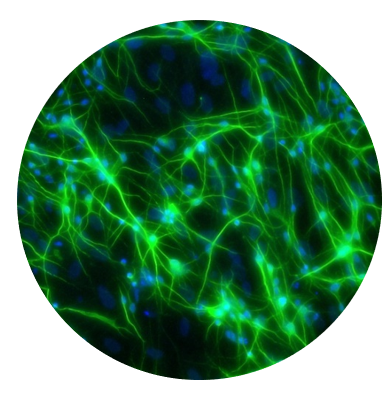
“Our human neural in vitro platforms are uniquely suited for assessing relevant complex electrophysiology readouts, which allows for better prediction of drug efficacy and potential CNS safety/toxicity than other systems”
What can an in vitro iPSC-derived neural system be used for?
With the unique advantages of the SynFire technology, such as rapid maturation and synaptic competence, our human neural in vitro platforms are uniquely suited for assessing relevant complex electrophysiology readouts, which allows for better prediction of drug efficacy and potential CNS safety/toxicity than other systems. These cells have been used more and more for compound screening as well as nonclinical safety assessment and chemical neurotoxicity studies.
If I'm a toxicologist looking into in vitro neurotoxicity assessment, what are the key considerations for me to select the right system?
SynFire neural cells are ideally suited for in vitro neurotoxicity assays. These cells more closely resemble real human biology than commonly used animal models and many other iPSC-based systems, resulting in better suitability to predict responses to compounds. The in vitro neurotoxicity assays extend beyond cell viability assays and image based morphological readouts. SynFire iNs advanced maturity, neural activity, and synaptic competence enable complex electrophysiology readouts which includes seizure liability testing and neural network maturation assays.
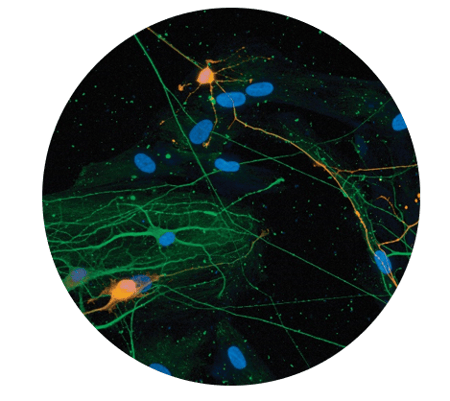
“SynFire neural cells more closely resemble real human biology than commonly used animal models and many other iPSC-based systems, resulting in better suitability to predict responses to compounds”
If I'm doing drug discovery and looking into in vitro CNS disease modeling, what are the key considerations for me to select the right system?
The high attrition rate of novel CNS drugs during clinical development has been a major challenge to the pharmaceutical industry. This is largely attributed to the lack of biologically relevant models to study functional links between target and phenotype. There are several factors that need to be taken into consideration when building neural in vitro models for drug discovery. It doesn’t matter if the model will be used for disease modeling, phenotypic compounds screening, target validation or efficacy testing, these models must be:
- Robust and Reproducible: SynFire cells go through an extensive QC process prior to distribution in order to ensure a high level of reproducible and robust functionality across different lots. This makes the system ideally suited for high-throughput drug screening projects.
- Biologically Relevant: Beyond working in a human genetic background, it is important to work in relevant cell types which would serve to address the researcher’s needs. The cell models must express desired targets functionally integrated into physiological processes and be able to respond in a predictable manner when challenged. Not all neurons are the same. NeuCyte’s reprogramming system is ideal to breakdown cell type specific phenotypes.
- Translatable: This means that the phenotypes identified in the in vitro platform would serve as a proxy for in vivo biology.
What are the current cell types offered by NeuCyte?
NeuCyte provides SynFire iNs, which are pure, ready-to-use induced human pluripotent stem cell (iPSC)-derived neurons. The different neural subtypes in the standard SynFire co-culture platform include glutamatergic excitatory iNs, GABAergic inhibitory iNs and astroglia. The neural subtype identities have been well characterized by a comprehensive set of functional assays.
To find out more about how SynFire technology can benefit your research, download our 4-page brochure.
Further reading
Editors note: This blog was first published in 2018 and has since been updated for accuracy and clarity.
